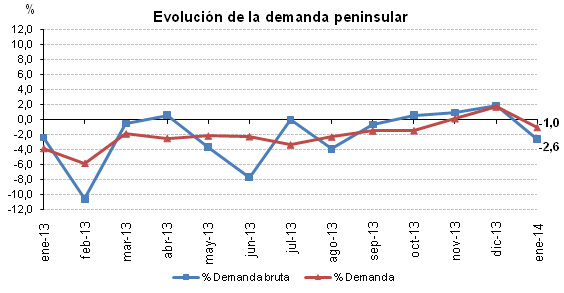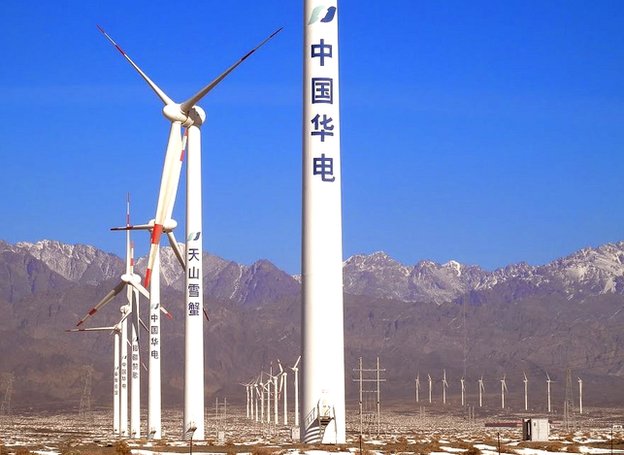Nevada Solar One is a concentrated solar power plant, with a nominal capacity of 64 MW and maximum capacity of 75 MW, spread over an area of 400 acres.
It is the second solar thermal energy (STE) power plant built in the United States in more than 16 years, and the largest STE plant built in the world since 1991.
The projected CO2 emissions avoided is equivalent to taking approximately 20,000 cars off the road annually. The project required an investment of $266 million USD, and the project officially went to operation in June 2007. Electricity production is estimated to be 134 million kilowatt hours per year.
It is located in Eldorado Valley in the southwest fringe of Boulder City, Nevada, and was built in that city's Energy Resource Zone, which requires renewable generation as part of plant development permits; Nevada Solar One was approved as part of Duke Energy's larger El Dorado Energy project that built 1 GW of electrical generation capacity.
The solar trough generation was built by Acciona Solar Power, a partially owned subsidiary of Spanish conglomerate Acciona Energy. Lauren Engineers & Constructors (Abilene, TX) was the EPC contractor for the project.
Acciona purchased a 55 percent stake in Solargenix (formerly Duke Solar) and Acciona owns 95 percent of the project. Nevada Solar One is unrelated to the Solar One power plant in California.
In 2006, located 30 miles north of Tucson, Arizona Public Service's Saguaro Solar Facility opened, with 1 MW of electrical generation capacity.
Nevada Solar One went online for commercial use on June 27, 2007. It uses similar technology and was constructed over a period of 16 months. The total project site is approximately 400 acres (0.6 mi² / 1.6 km²), while the solar collectors cover 300 acres (1.2 km2).
Nevada Solar One uses proprietary technology to track the sun’s location and concentrate its rays during peak demand hours.
The plant uses 760 parabolic trough concentrators with more than 182,000 mirrors that concentrate the sun’s rays onto more than 18,240 receiver tubes placed at the focal axis of the troughs and containing a heat transfer fluid (solar receivers). Fluid that heats up to 735 °F (391°C) flows through these tubes and is used to produce steam that drives a Siemens SST-700 steam turbine, adapted to the specific requirements of the CSP technology, which is connected to a generator to produce electricity.
The mirrors are manufactured by Flabeg AG in Germany. In contrast to the power tower concentrator concept that California's original Solar One project uses. The specially coated tubes, made of glass and steel, were designed and produced by Solel Solar Systems as well as by Schott Glass in Germany. Motion control was supplied by Parker Hannifin, from components by Ansco Machine Company.
Solar thermal power plants designed for solar-only generation are well matched to summer noon peak loads in areas with significant cooling demands, such as the southwestern United States. Using thermal energy storage systems, solar thermal operating periods can be extended to meet base load needs.
Given Nevada's land and sun resources the state has the theoretical ability to have more than 600 GW of electrical generation capacity using solar thermal concentrators like those used by Nevada Solar One.
It has been proposed that massive expansion of solar plants such as Nevada Solar One has the potential to provide sufficient electricity to power the entire United States.
Parabolic concentrator facilities have been successfully operating in California's Mojave Desert commercially since 1984 with a combined generating capacity of 354 MW from the Solar Energy Generating Systems.
Concentrated Solar Power, Concentrating Solar Power, CSP, Concentrated Solar Thermal Power, solar power, solar energy, Acciona, U.S., Nevada,




















